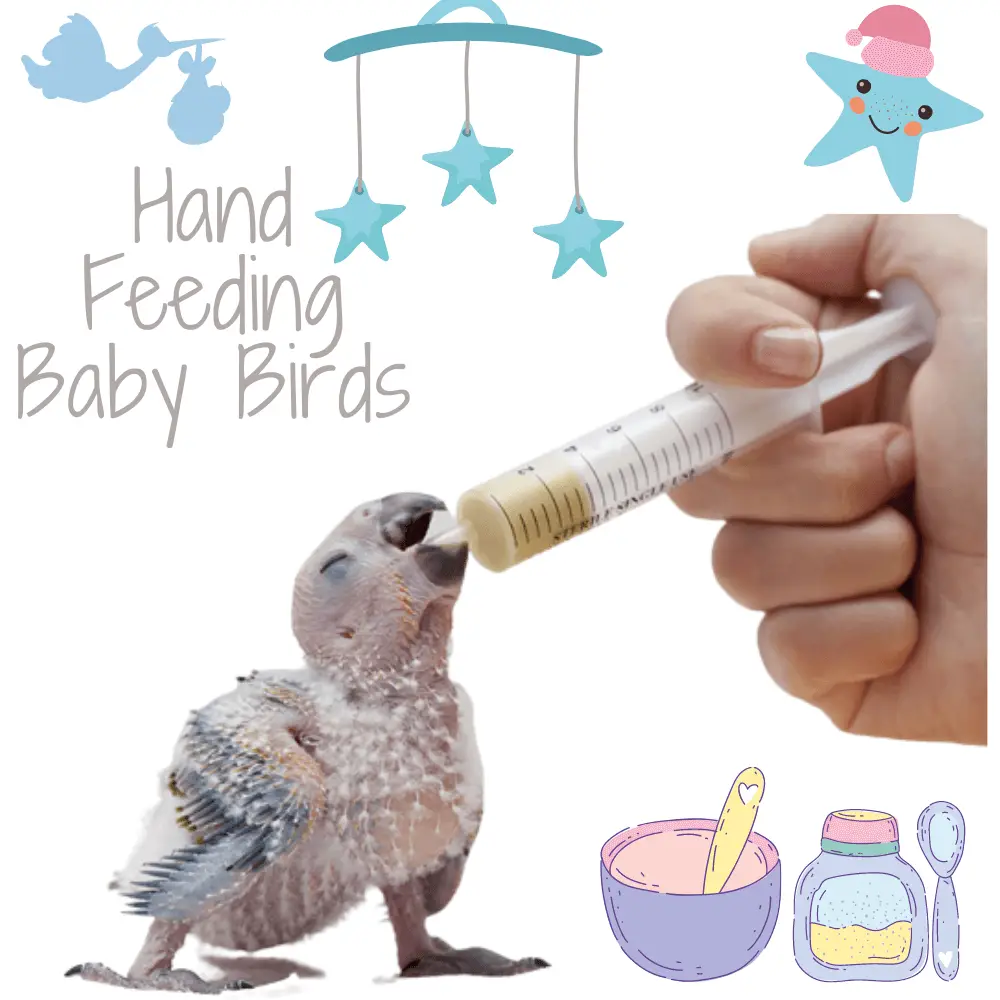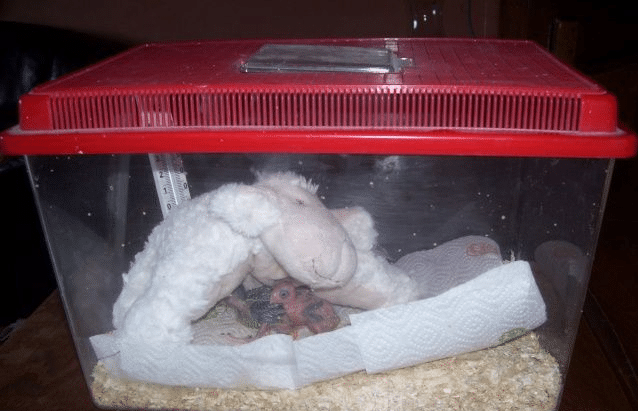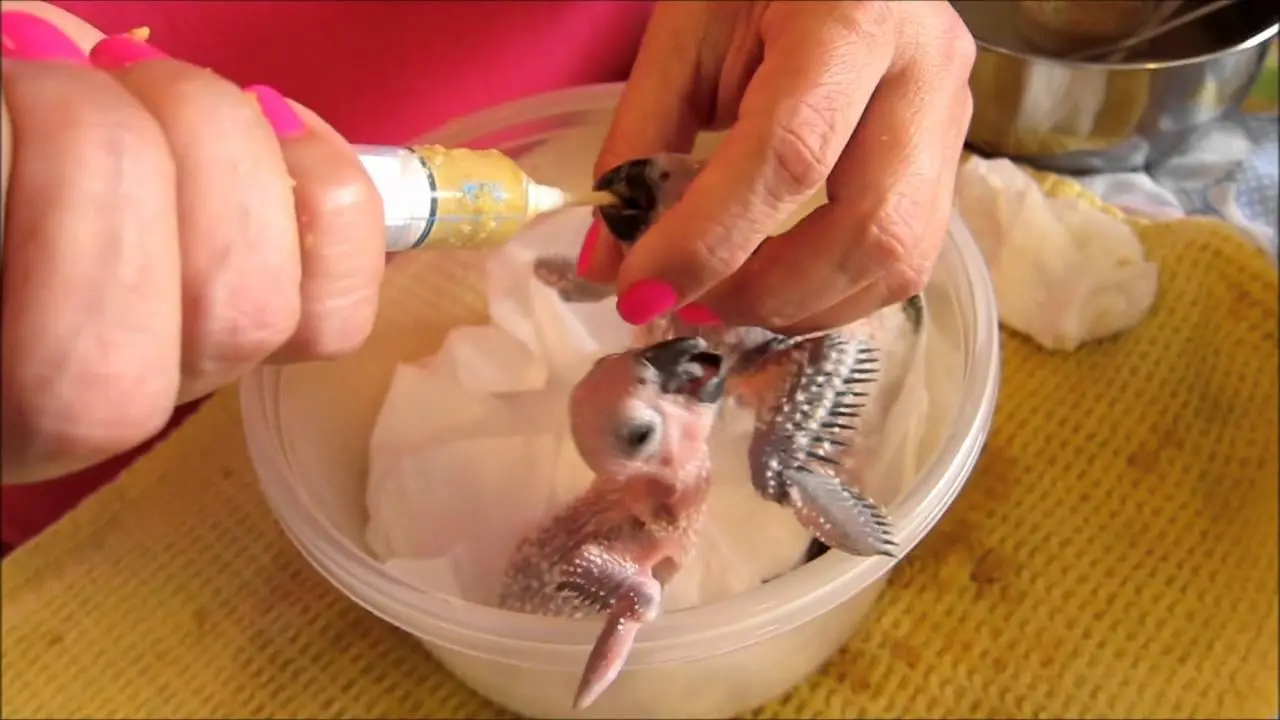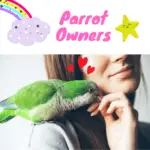
Hand feeding baby birds: Breeding parrot by hand or by parents It must be considered that parrots, even if bred in captivity for generations, remain wild animals whose taming is possible but not obvious.
There are two distinct methods of rearing young birds, each with its advantages and disadvantages, but above all each one that can influence the future character of the bird:
- Hand-raised consists of taking the egg or chick out of the hatch and removing it from the nest and feeding it by hand.
- Parent rearing where the young parrot and his education are left to his parents in cages or in aviaries.
Breeding parrot by hand or by parents
Breeding by hand is a very demanding method that requires a lot of work but the reward is great since it offers a privileged and very strong link between the man and the bird which will be completely impregnated by the human presence.
A breeder can decide to raise a bird for different reasons: the egg or chick is abandoned by his parents, decision to impregnate the fledgling to make a pet bird, removal of eggs to encourage new eggs (the chicks born from artificial incubation cannot be handed over to their parents and must be raised by hand).
Once the chick is removed from the nest, it is fed (every hour in the beginning) by its breeder directly to the beak. He will then completely immerse himself in the human presence to the point of considering the man as a congener, which will have many consequences on his behavior summarized in Table (SCHMID, DOHERR, STEIGER ).

Hand feeding baby Parrot
SOURCE:Budgie Video
Hand breeding
Hand-rearing can be both the best and worst practice.
For a long time, it was not possible to replace the parents. In recent years, veterinary research has made it possible to produce high-quality animal feed.
The primary goal of breeding by hand was to replace bad feeder parents and to breed litters of endangered birds: zoos were, therefore, the pioneers of this new technique.
Then, the marketing of these mash allowed amateur breeders and animal sales professionals to practice hand-breeding.
Hand-rearing “produces” impregnated and human-friendly birds. Whether the parrot is intended for captive breeding or to become a “pet bird”, the breeder will obtain birds that are more psychologically stable (in any case, more often than not!).
A parrot raised by hand will undoubtedly make a better companion for an individual: softer, calmer, not stressed, … On the other hand, with a wild import parrot, you are likely to remain fearful and aggressive.
Some, for completely scientifically false reasons, do not carry outbreeding by hand and offer non-weaned birds for sale (around 8 to 10 weeks), arguing that:
Parrots love
The baby Parrot will be attached to you because you have fed him
1 – The bird is certainly cheaper at first glance, but by adding the price of the livestock mash sold with the bird and the time that the seller will not have spent until weaning (or even the staff that he will not have had to pay), the seller, therefore, finds “his account”.
2 – The bird will not be more attached because this chick only knows the human being and will attach as well to you or to a member of your family that it was sold weaned or not.
Selling you an unweaned bird and offering to finish weaning yourself is a deep contempt for the bird. You make this young bird take risks. Feeding by hand is a technique that can be learned and beyond, each baby has his own rhythm and needs. Only experience can meet these needs and obtain correct growth (the closest to that which would have been obtained with natural parents).
Consequently, the cost of a quality mash, the technical nature of breeding by hand and the time spent on the bird until it is weaned explain and even justify that a parrot bred by hand and weaned be sold. more expensive.
This article reflects the reality of certain conditions of sale and the risk that you run (there is no guarantee on the live animal that you buy). ASAP receives numerous calls from individuals in distress: babies who die after a few days, refusal to eat, weight loss, etc. These calls are seasonal and correspond to the periods of sale of babies.
So keep a critical mind during the sale and remember that …
A weaned parrot (that is to say capable of feeding alone and normally) is at least 4 months old.

Hand rearing
Nowadays, the breeding of exotic birds is developing more and more. In the parakeet and parrot farming industry, new techniques have emerged to improve results, including artificial incubation and hand-rearing. Raising by hand consists of feeding a young bird in place of its parents, but not only … This type of breeding requires very special care and important precautions: this cannot be improvised!
1 The environment and feeding
2 Socialization
3 Weaning
4 The dangers of hand raising
5 The alternatives
Hand-rearing techniques
This technique is useful in several cases:
- For the rescue of young chicks abandoned by their parents.
- To encourage parents to start a new brood: this is particularly useful when you want to breed rare or endangered species.
- To tame the young bird in question, indeed the young birds raised by hand are used to humans, are not afraid of them, and easily become companion birds.
- Hand-raised fledglings can be fledged as soon as they hatch, which is the case with fledglings hatched in an incubator.
- They can also be raised by hand when they are abandoned by their parents or when the breeder decides to take them from the nest.
- Some breeders prefer to take the young at the opening of the eyes (around 10 days) so that they easily accept to be fed, while others prefer to take them when they start to be well plucked (around 3 weeks) because they are therefore less fragile.
In fact, a nest of Psittacidae is born covered with a fine down with closed eyes. He is then unable to fend for himself: he needs his parents to feed him and keep him warm.

Baby Parrot feeding
Equipment
A pan to heat the water will be used to prepare the pâté. The temperature of the food is very important to ensure good digestion by the baby bird.
It should be around 32 °. It also should not be too hot so as not to burn the crop of the young bird. A good method of ensuring the right temperature, in addition to using a thermometer, is to pour a drop of mash on the forearm so as to realize if the temperature is not too high.
In order to keep the food warm, I keep it in a bain-marie in the pan that was used to prepare the food.
– A mash preparation container into which we pour the amount of water to which we add the mash. Personally, I opted for a small pot with a lid which allows me to mix the mash well and thus avoid lumps. We can also opt for the use of a small whisk but with use, I find that I have lumps faster and more the temperature of the mash drops quickly.
– a thermometer to control the temperature of the mash.
– a needle. Personally, I use 1 ml syringes for all species, especially at the start of feeding because they have a slower flow rate which allows the baby bird to learn at ease contact with the syringe while not being force-fed too quickly. Once the feeding is well developed by the bird, the syringe size may vary depending on the species being fed. For small birds such as cockatiel or budgerigar, or lovebird, I continue with the 1 ml syringe; for cockatiels, I would recommend 2 ml syringes; for conures with a faster absorption rate, I would recommend a capacity of 5 ml; for parrots such as the Gabonese grays, 10 ml syringes can be used.
– paper towel to immediately wipe any overflow of mash out of the spout, but also to put under the bird to prevent it from slipping.
– feed mash – not to be confused with the fatty mash or dry mash which are for birds that already eat by themselves. There are several brands on the market; Nutribirdt 21 or 17, Kaytee.
Personally, I have a clear preference for the Kaytee which dilutes well and which gives me better results in terms of digestion and development of the young bird. This is only a personal idea and other breeders will prefer the nutribirdt.
SOURCE:XtremeMundial Birds
The actual instructions for hand feeding
First of all the point on which I will insist on priority is the direction of the nourishment.
When you hold the chick in front of you, you must inject the food from your right to your left; if you refer to the bird, the syringe will, therefore, be to the left of its beak – as in the photo. This is very important to avoid the always fatal false swallowing in the bird. In fact, from the anatomical point of view, the respiratory tract of the bird is on your right and that of the digestive tract is on your left – always with the bird in front of you. By injecting from your right to your left the food goes into the digestive tract.
The quantity of mash is variable from one species to another and also according to the age of the chick.
One of the rules is that the quantity must not exceed 1/10 of the weight of the bird; Personally, I find this theory a bit exaggerated because it goes hand in hand with a higher number of meals depending on the emptying of the crop.
I would tend to say that the amount of mash must be based on the bird, some being faster than others. There is however a quantity not to be exceeded even if the bird still claims; This amount is determined by the filling of the crop which should stop just below the base of the neck.
To avoid saturation of the crop, you must stop just before the food reaches the base of the bird’s neck
.EAM 1 EAM2
Frequency of meals
The ideal age to start hand feeding is between 2 and 3 weeks. At this age, the young bird was able to benefit from the feeding of the parents providing it with a sufficient level of antibodies. At the same time, the still young chick will more easily accept the syringe. Beyond 3 weeks, unless forced to do so for a very specific reason such as abandonment by the parents, you should no longer start feeding by hand because the chick having not been accustomed may not accept the syringe which could cause unnecessary stress.
At three weeks a young bird must have an average of 5 meals over the course of the day, divided between 6:00 a.m. and 24:00 p.m. which leaves an interval of 3:30 between meals.
The main thing to give the bird a meal is that the crop must always be empty before a new meal. This is essential because feeding a young bird that has not finished digestion of the previous meal can lead to blockage of the crop.
The number of meals gradually decreases, as the young bird grows and the volume of the crop increases. There is an average of one meal less per week. This rule is not general, however, because it is ultimately the baby bird that determines the number of meals based on the amount ingested and the speed of emptying the crop.
The consistency of the mash: in general it should be a little more liquid during the first feedings but it must, however, respect the proportions recommended by the manufacturer of mash.
For example, for kayaking, there are two volumes of water for one volume of mash.
The mash should have a consistency of pancake batter.
Around the age of 5 weeks, the first seeds will be introduced into the baby’s diet, in the form of millet. We will also ensure a vitamin supply with a dry or fatty mash based on fruit then gradually we will introduce mixed fruits and vegetables then finely chopped.
The chick is weaned around 8 weeks; however, this age should not be taken in the strict sense of the term in the sense that some birds are earlier or later than others. Personally, I base myself on the complaints of the young bird. As long as the young bird is claiming that it is not ready to leave its parents and so I continue the feeding while stimulating the young bird towards the seeds, fruits, and vegetables and mash in a mixture that I give them.
To be able to ensure that a young bird is weaned, it must eat alone but also drink alone. To initiate the drink just present a little water and delicately dip the beak of the bird in the liquid so that it discovers the contact. Once the discovery is made, the young bird is generally tempted to drink. This first contact with the drink must sometimes be repeated several times, but in general, the bird learns quickly. However, you have to take into account that a bird drinks little and therefore you should not expect to see it drinking often. The times when the bird is most willing to drink is usually after eating its seeds. It is therefore important to keep a close watch so that you can spot when he drinks.
At the same time, the behavior of the young bird must be observed, although knowing how to eat and drink can still demand food; in this case, I continue to present the syringe to him in the evening while gradually decreasing the quantity given. Little by little the young bird gets used to it and ends up not asking anymore.
The environment and food
A breeder who practices breeding by hand must, therefore, be equipped with a breeder that will keep the young birds warm at a precise temperature and control the humidity of their environment.
He must also feed the chicks, which can be done using a spoon, a syringe, or by sampling (a technique practiced by some experienced breeders).
The food should be at a fixed temperature, hot enough for the baby to accept it and digest it well and not too hot so as not to burn it.
There are foods specifically designed for young hand-raised psittacids. These foods are in the form of a powder to be reconstituted with hot water. The consistency of the mash obtained is very important: it must be more liquid at the start and thicken as the baby grows.

Socialization
Parakeets and parrots are particularly intelligent animals. They need to be stimulated at an early age to become “balanced” birds.
If one wishes to tame them, it will be necessary for addition to the feeds to handle them regularly, to speak to them, to pet them to accustom them to humans.
Putting them in contact with different people, with children (taking precautions), and putting toys or gnawing branches at their disposal is highly recommended if they are intended to become companion birds.
In any case, the presence of other birds around them is important so that they are socialized with their own species and that they realize that they are birds.
Birds hatched in an incubator, raised by hand alone and fed only by the breeder without any interaction, are more likely to develop behavioral problems later.
Unlike birds that were first fed by their parents, those that are raised by hand in a group and that are handled regularly by the breeder are more likely to be “good at it.”
SOURCE:Friendly Birds
The withdrawal
Weaning corresponds to the phase when the young bird learns to feed itself.
Gradually, he will start eating a few seeds, eventually refusing the mash and feeding alone.
At that time, he will be really weaned.
The weaning age is variable depending on the species and ranges from 6 weeks in the budgerigars to several months in large macaws and cockatoo, most parakeets being weaned at 2 months and parrots at 3 months.
The young bird will have to be put in contact with various kinds of food: seeds, granules, fruits and vegetables, various and varied nuts, in order to be able to vary its food in its future life.
Indeed, a bird weaned only on seeds will often find it difficult to accept other foods afterward, in particular fruits and vegetables which would provide it with essential vitamins.
During this phase, he will lose up to 10% of his weight
Finally, even if a parrot raised by hand is more easily tamed, its behavior will always remain different from that of a “classic” domestic animal such as a dog. You will, therefore, have to spend time with him to understand it.
During this phase, he will lose up to 10% of his weight, it is a delicate phase and it must be monitored by an experienced breeder.
Be careful, dishonest breeders offer young, non-weaned birds for sale, claiming that they will be tamer if their new owner feeds them: this is completely false!
Indeed at weaning the chick detaches from the person who feeds it as it would have detached from its parents, so it is better to adopt a baby parrot after weaning.
In addition, breeding by hand cannot be improvised, and too many young parrots die in the hands of inexperienced owners.
The dangers of hand raising
As we mentioned earlier, raising a young bird by hand cannot be improvised.
If the baby is not kept warm enough or if the mash is too thick or too cold, the digestion of the baby will be slowed down. In the most serious cases, the digestive transit is completely blocked and the food remains in the crop. We then speak of the stasis of the crop.
The fermentation of the blocked food and the lack of energy supply then cause the death of the chick if nothing is done.
Prevention is better than cure, but if in doubt, consult a veterinarian as soon as possible.
The feeding technique cannot be improvised either. Young Macaws were thus seen swallowing the spoon with which they were fed, which requires an emergency consultation with a veterinarian again.
When you decide to practice breeding by hand, it is, therefore, necessary to think about it well, to be well equipped, and ideally, to meet a breeder practicing breeding by hand for a long time from whom you can learn the technique of feeding.
It is important not to start lightly, to breed by hand is to take responsibility for the life of a chick who has asked nothing of anyone!
The alternatives
Adoption is a possible alternative. We can thus place eggs or young abandoned under another female hatching.
However, there must be another pair of sufficiently close species at the same breeding stage and they should be carefully monitored once the young have been transferred in case they are not accepted.
To tame young parakeets and parrots, rather than removing them from their parents, it is also possible to handle them regularly to tame them in the nest. This technique is based on the assumption that it is the fact of handling the chick and not feeding it that tames it.
It is better that the couple is calm enough and used to monitoring the nest so that it does not abandon the young or injure them.
Before handling the young, parents must be brought out of the nest. Then with warm and clean hands take the young in hand by talking to them and stroking them, at first a few minutes a day, then more and more often and longer and longer as they grow and their plumage forms.

Parrot handling
EVERYTHING YOU NEED TO KNOW BEFORE GETTING STARTED
I hesitated and thought about it for a long time before creating this post, but seeing the number of people victims of unscrupulous breeders I opted to explain all the precautions and the user manual to take care of these small victims that are the weaned chicks.
It has now been almost fifteen years that I practice breeding by hand, by choice, after learning by being supervised by a very competent breeder who gave me a good banding to start. Indeed, not only did she show me how to feed a young bird but she also explained to me the risks such as blocking the crop or others, and taught me what to do to save the troubled young bird.
I want to draw the attention of novices that this article of my blog should not encourage to start hand feeding alone but just to know what to do once caught in the spiral of an unhealthy world of unscrupulous breeders who do not hesitate to sell small living beings as one would for a lifeless commodity, seeing only the greed. How many people did not naively believe that feeding a young bird for sale was a simple thing consisting in introducing into the beak any mash and who later realized that problems presented themselves, linked to a bad practice sometimes leading to the death of the young bird who would have asked only to live a happy life surrounded by the love of his own?
This is what motivated my choice to explain here the “instructions for use” of hand feeding.
1. The living environment of a hand-fed baby bird.
A young bird needs certain environmental conditions to develop properly.
The two main elements are temperature and humidity
There are of course sophisticated incubators providing all these elements but the cost is very high and is not, in my opinion, necessary for someone who may only feed a little one once in his life chick.
Elements of a “makeshift” installation
- 1. A plexiglass tray
- 2. an infrared lamp
- 3. A linen closet for hanging the infrared lamp
- 4. A chain to adjust the height of the infrared lamp to maintain a good temperature
- 5. A thermometer to put in the plexiglass tray
- 6. A small water tank, protected by gauze to prevent the young bird from drowning; There are also small containers in pet stores with hooks that allow it to be raised, thus avoiding this risk.
view of the plexiglass tray – as you can see I put a layer of shavings, covered with a paper towel which I change with each meal so as to ensure optimal hygiene for the little nestling which is still at this stage very fragile and sensitive to microbes.
A small comforter is also installed there so that the little one does not feel alone on the one hand and on the other hand it also allows him to shelter from light. This comforter also allows the baby to keep the head up while sleeping, a position which, although not essential, is nevertheless more comfortable.
A plexiglass tray is seen from above. You can see the thermometer on the right, which allows you to monitor the temperature.
We also see the water tank which will ensure the good humidity necessary for the baby bird. This system does not allow a “control” of the precise degree of hygrometry but it has the advantage of ensuring a supply of water to the environment in which the chick evolves.
Overall view of the installation: the infrared lamp is therefore suspended by a chain attached to a wardrobe (linen closet style); this chain allows you to adjust the height of the lamp above the plexiglass tray depending on the temperature.
When the young bird is small and not plucked, it needs a temperature between 32 and 35 °.
This contribution of heat is important because it will allow the baby bird to develop well but also to digest well. An insufficient temperature is often the cause of too slow digestion which can go as far as blocking the crop, the most serious problem which can lead to the death of the young bird.
When setting the temperature, it is important to observe the baby bird in order to spot excess heat. This one indeed when it is too hot breathes the open beak and tends to “pull”. It is then imperative to lower the t ° because an excess of heat is harmful to the little one.
As the young bird plucks, the temperature will have to be lowered gradually to reach this point, once the young bird is completely plucked so as not to provide any additional heat. At this stage, he will be able to pass into a small cage where he will then learn to evolve as adult birds do.




















